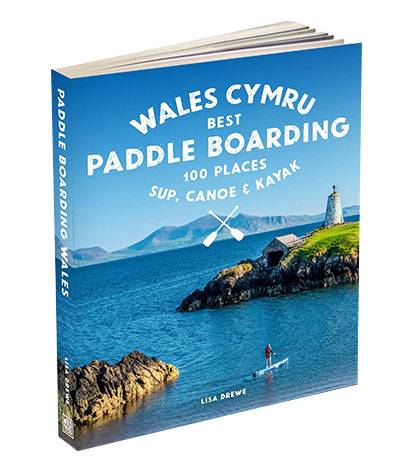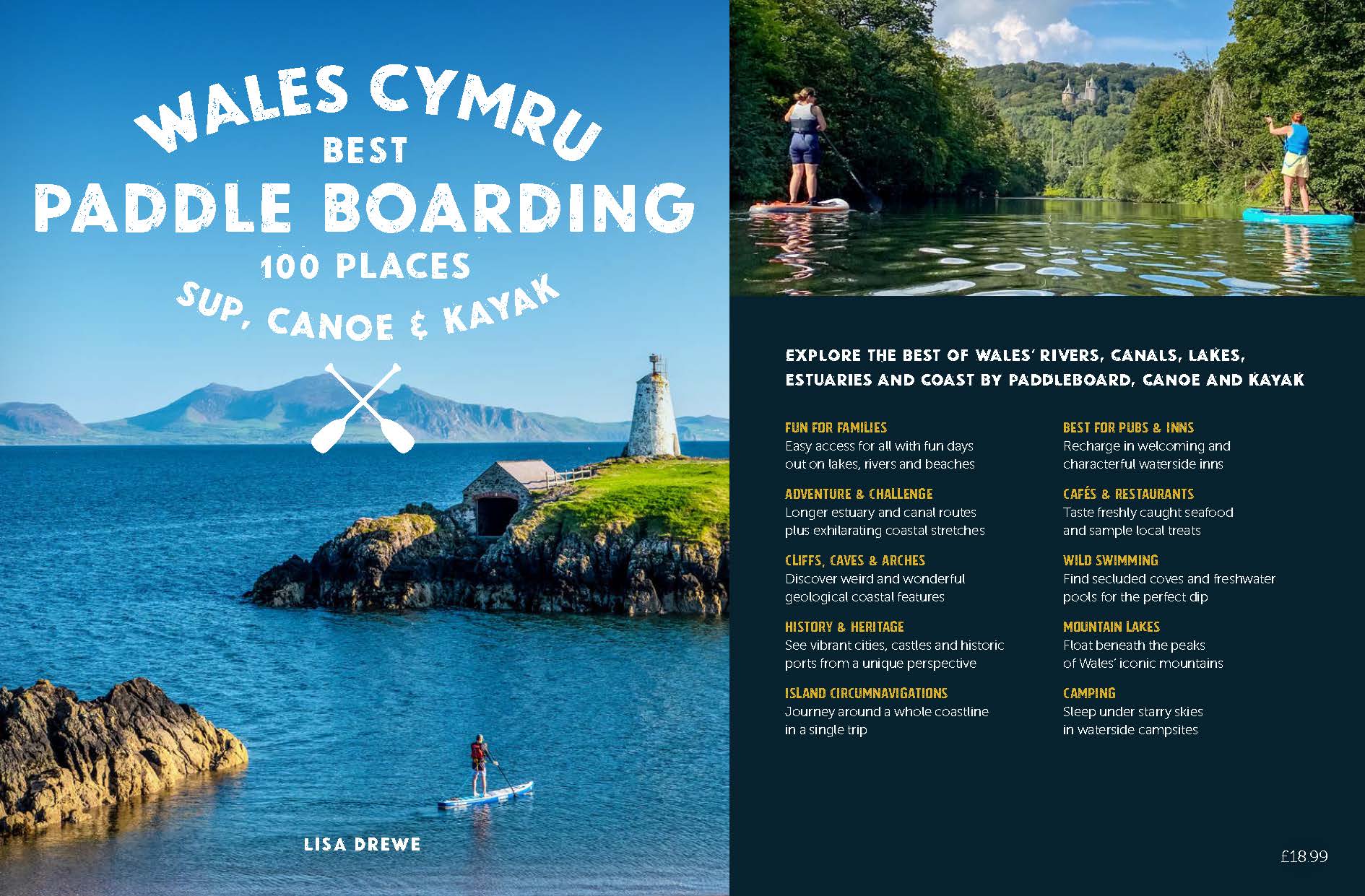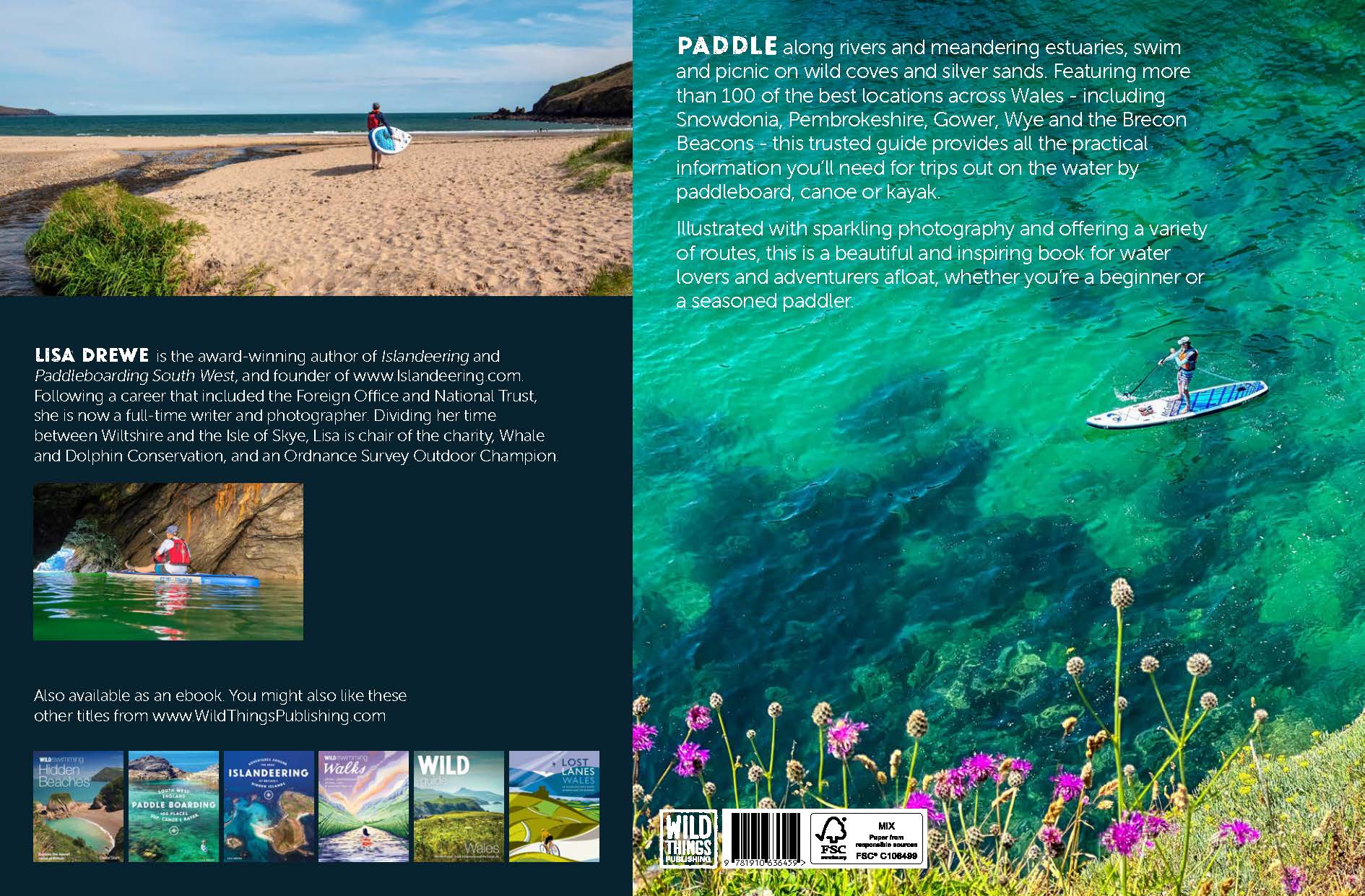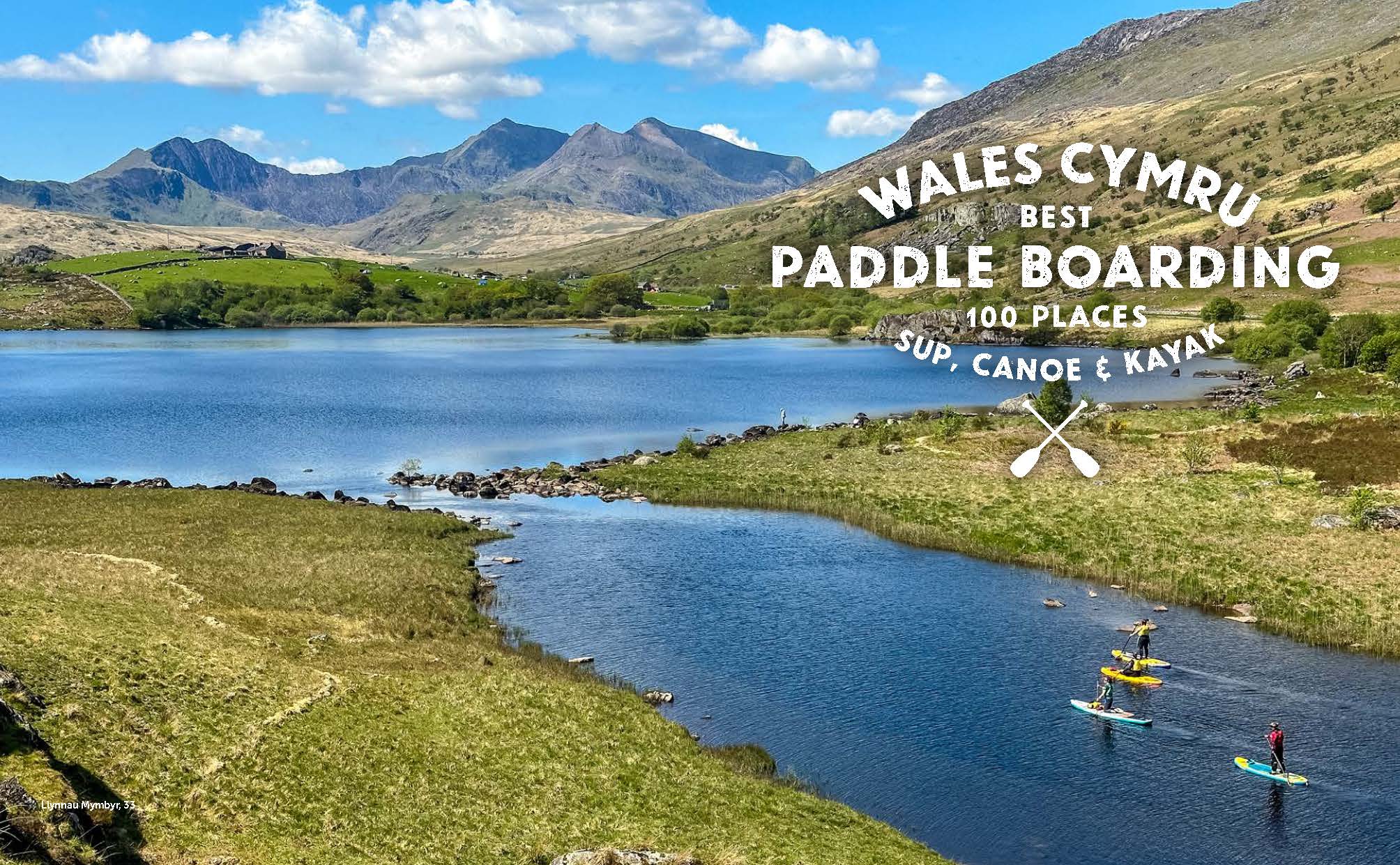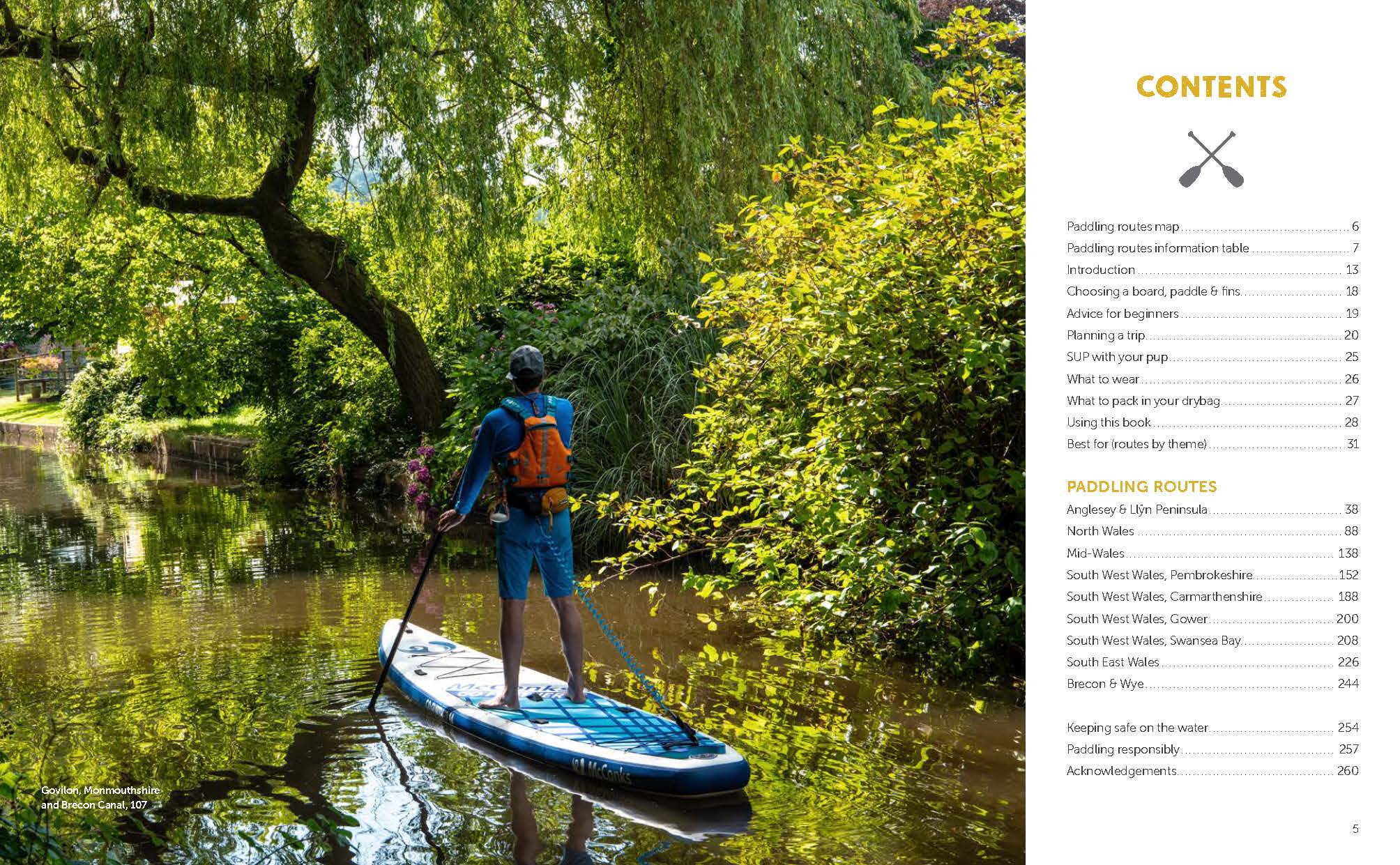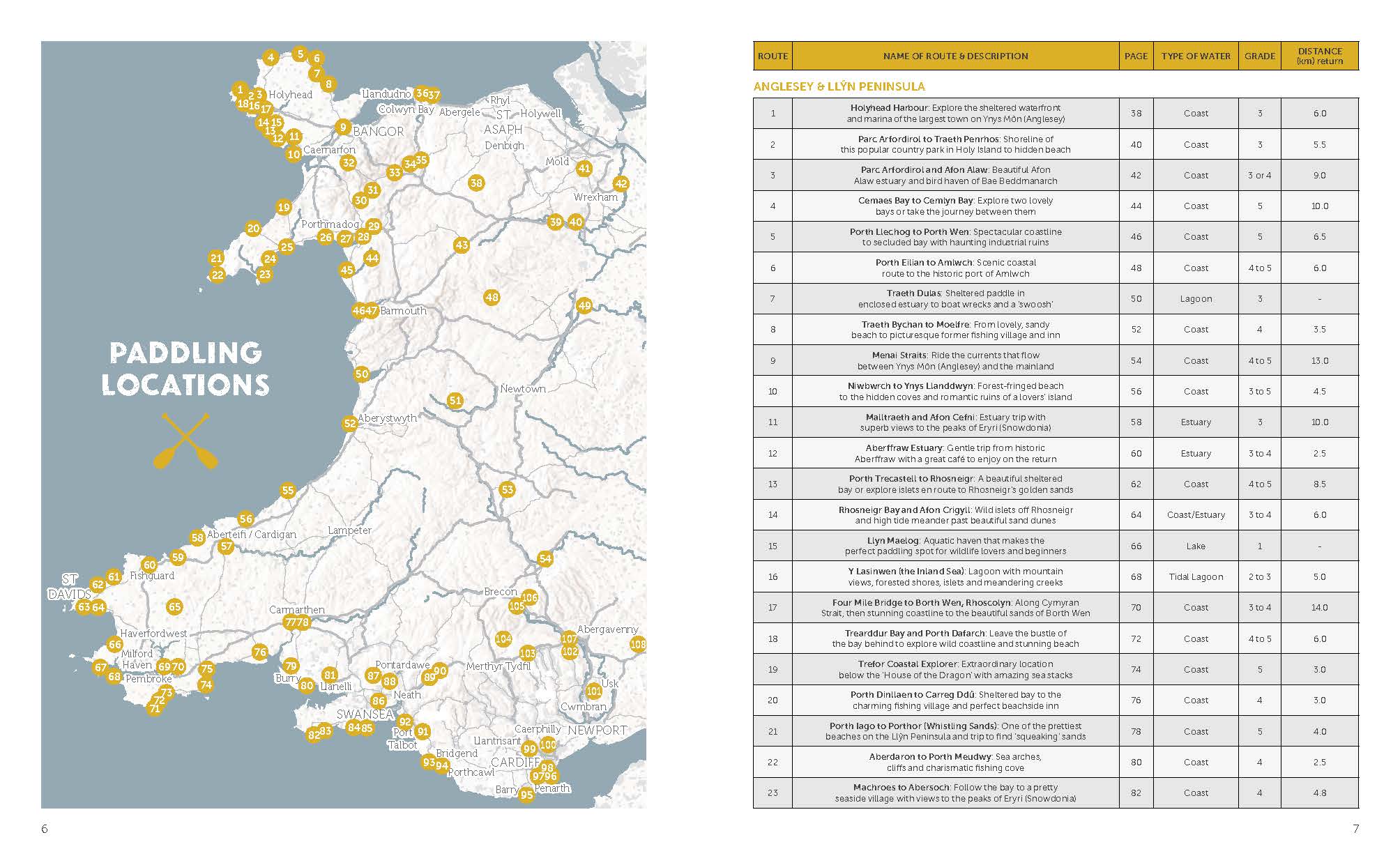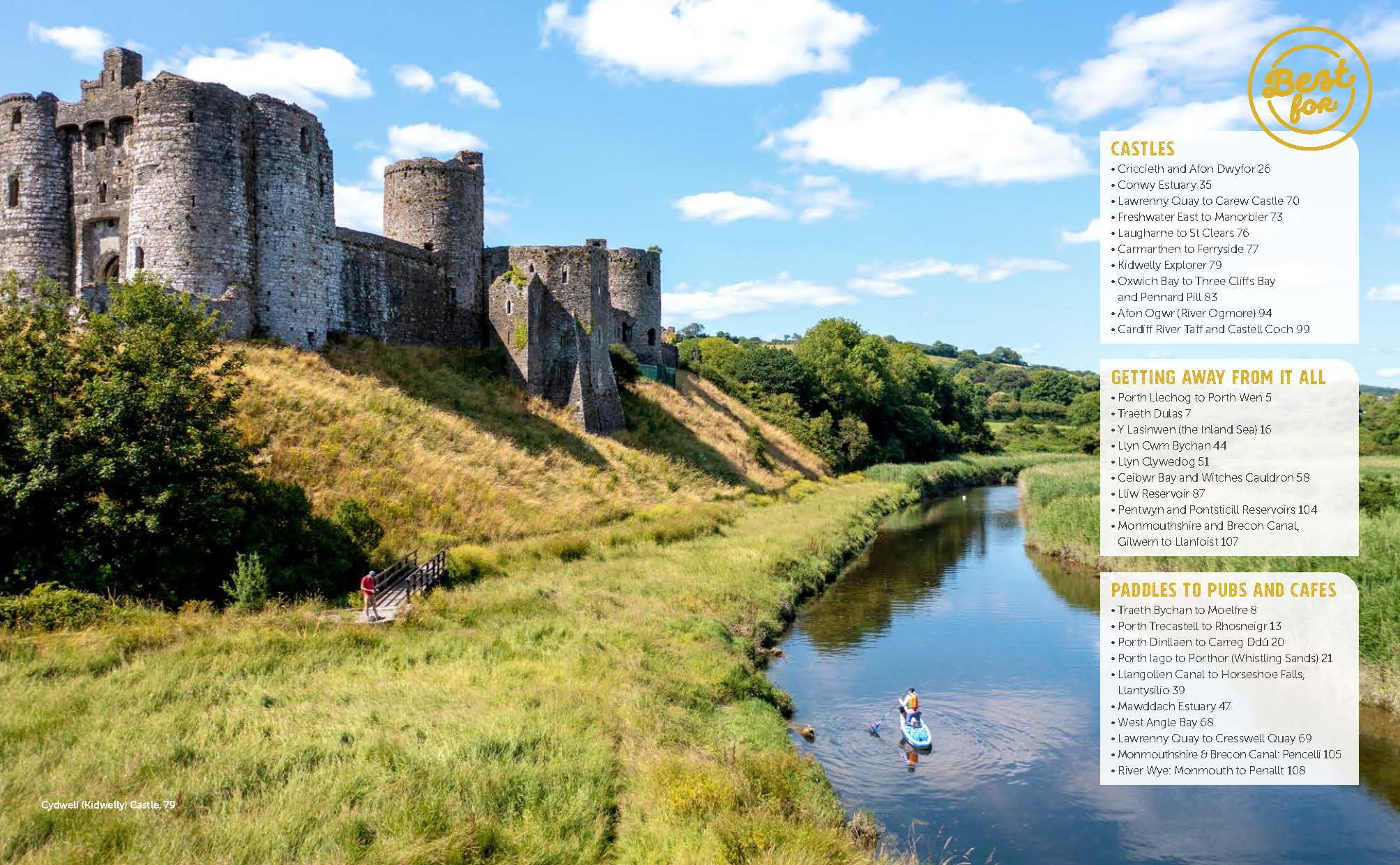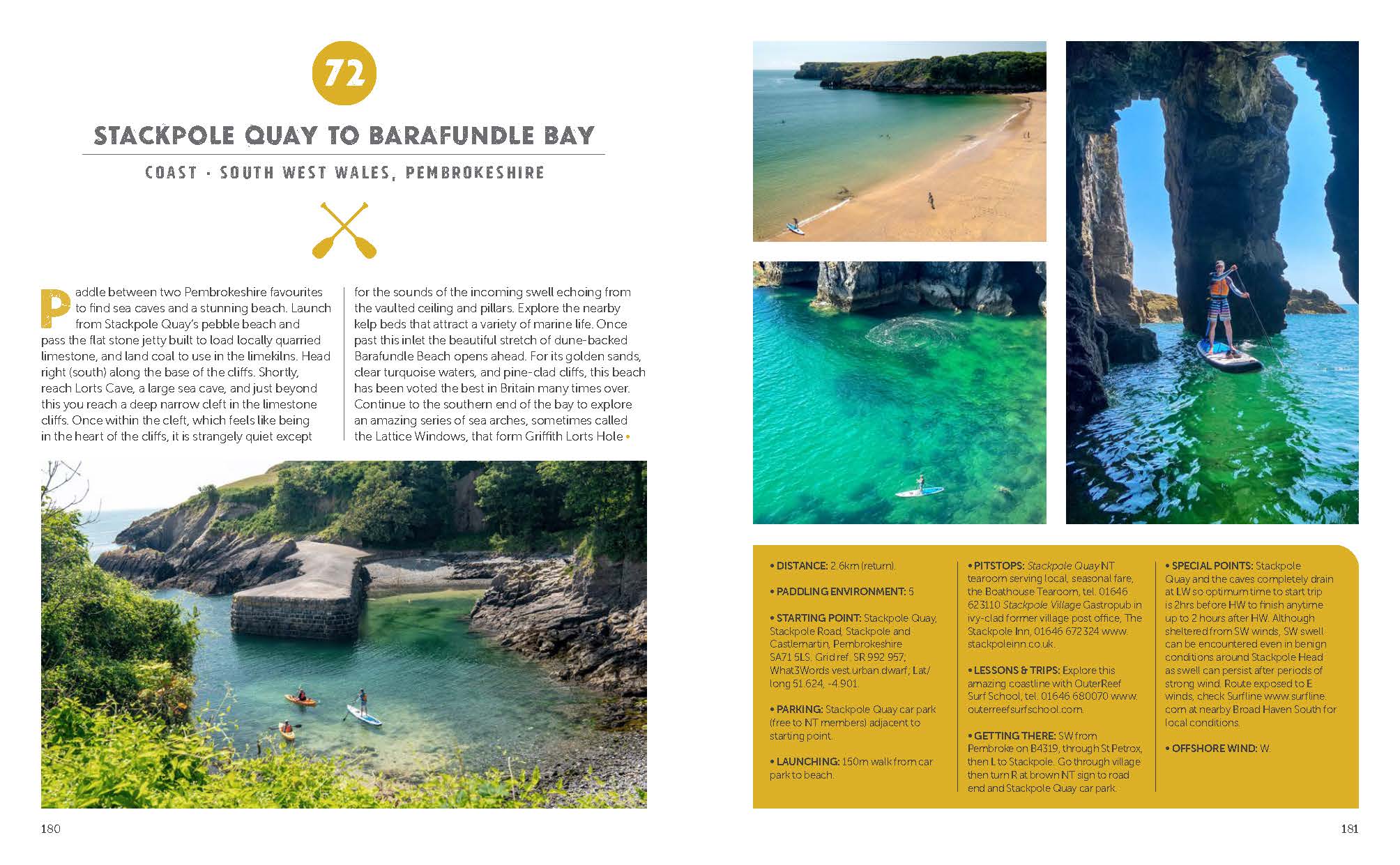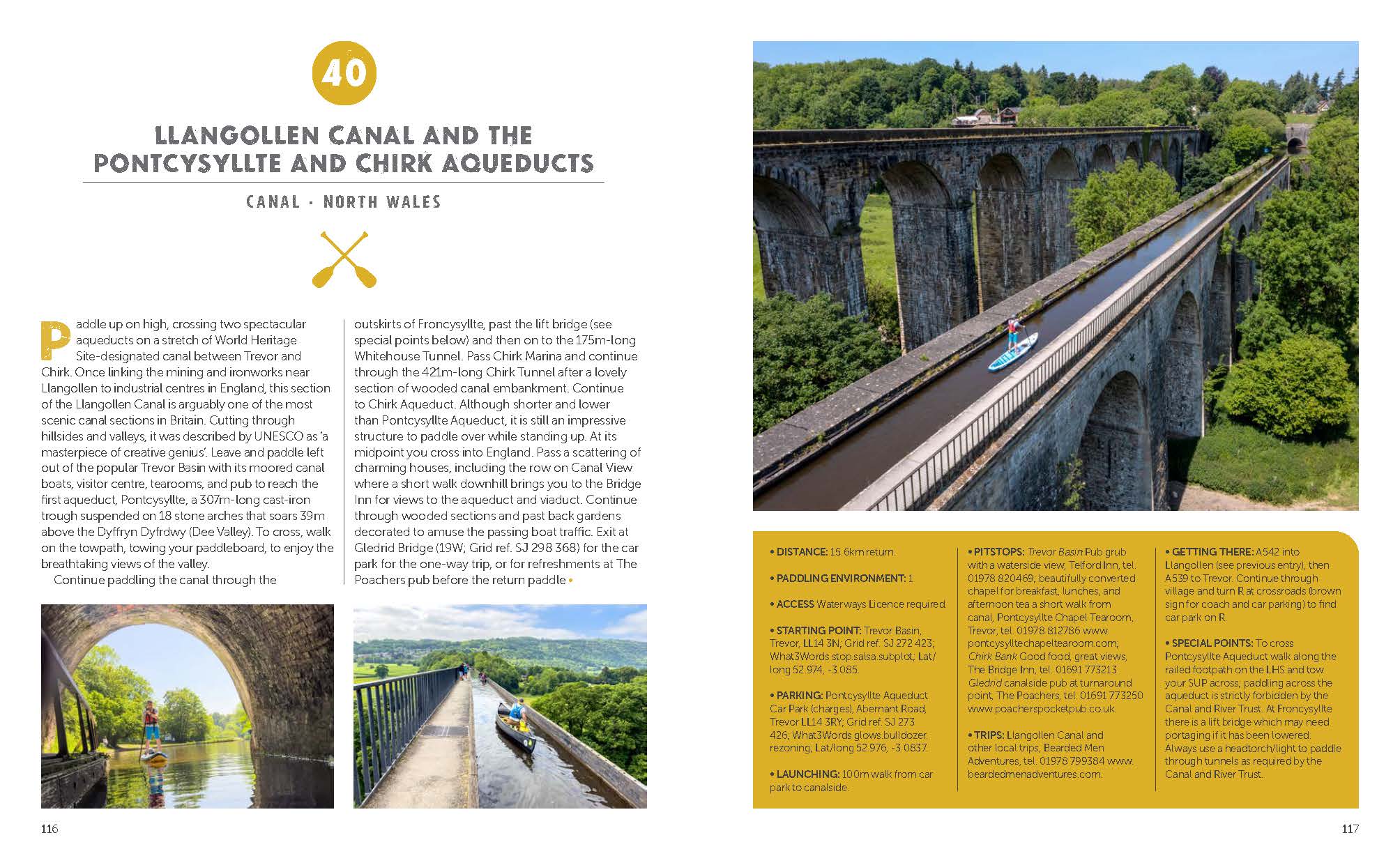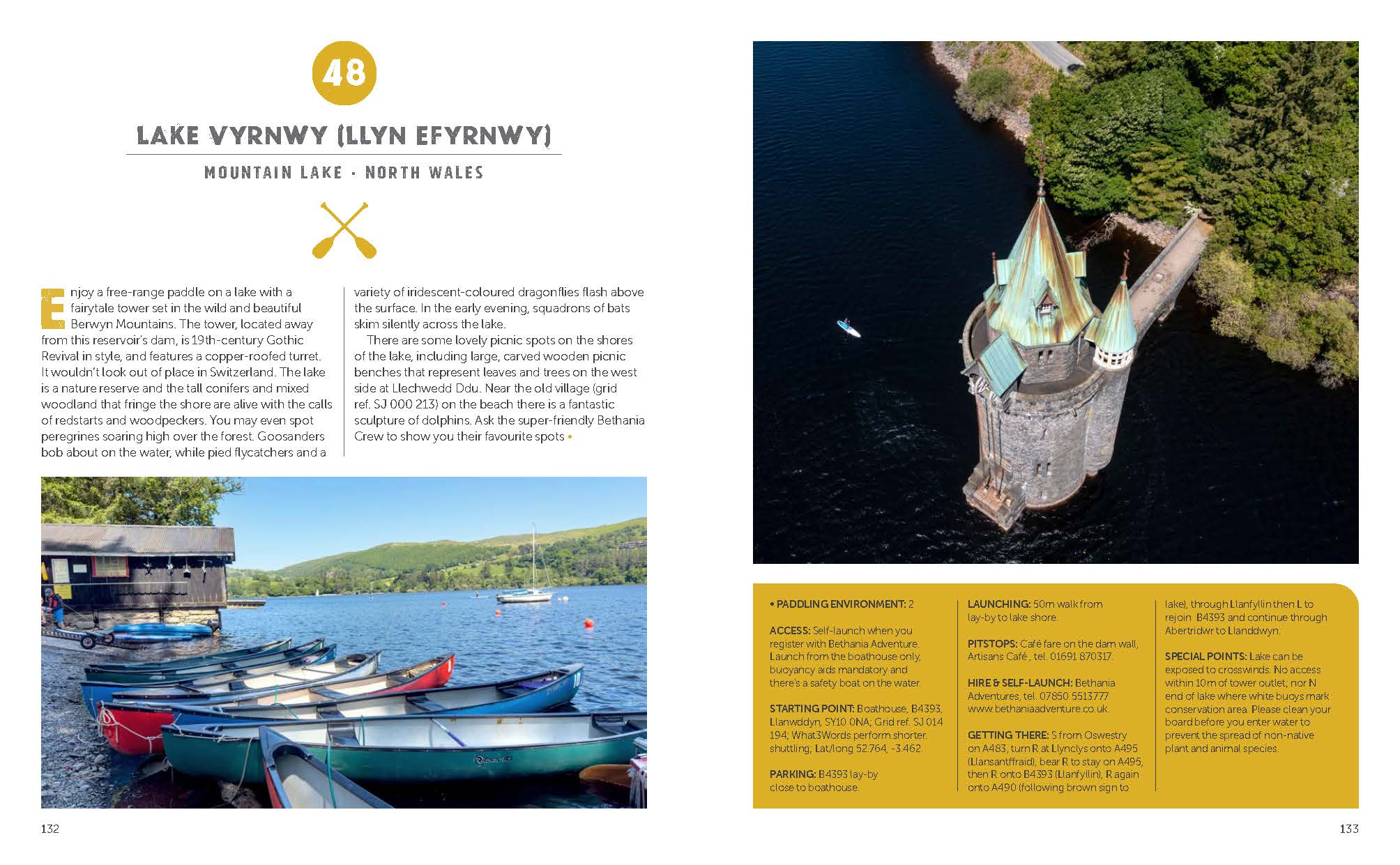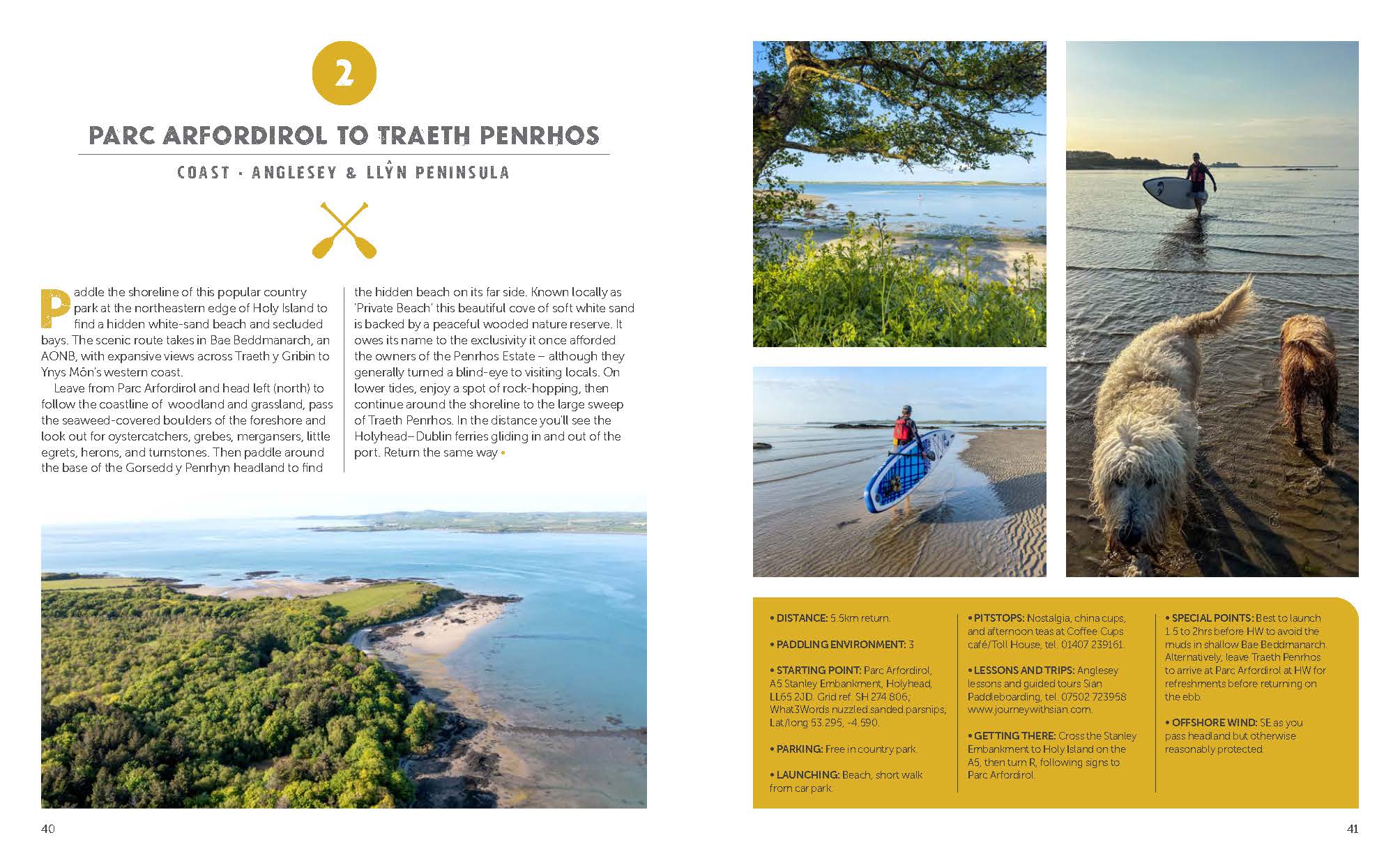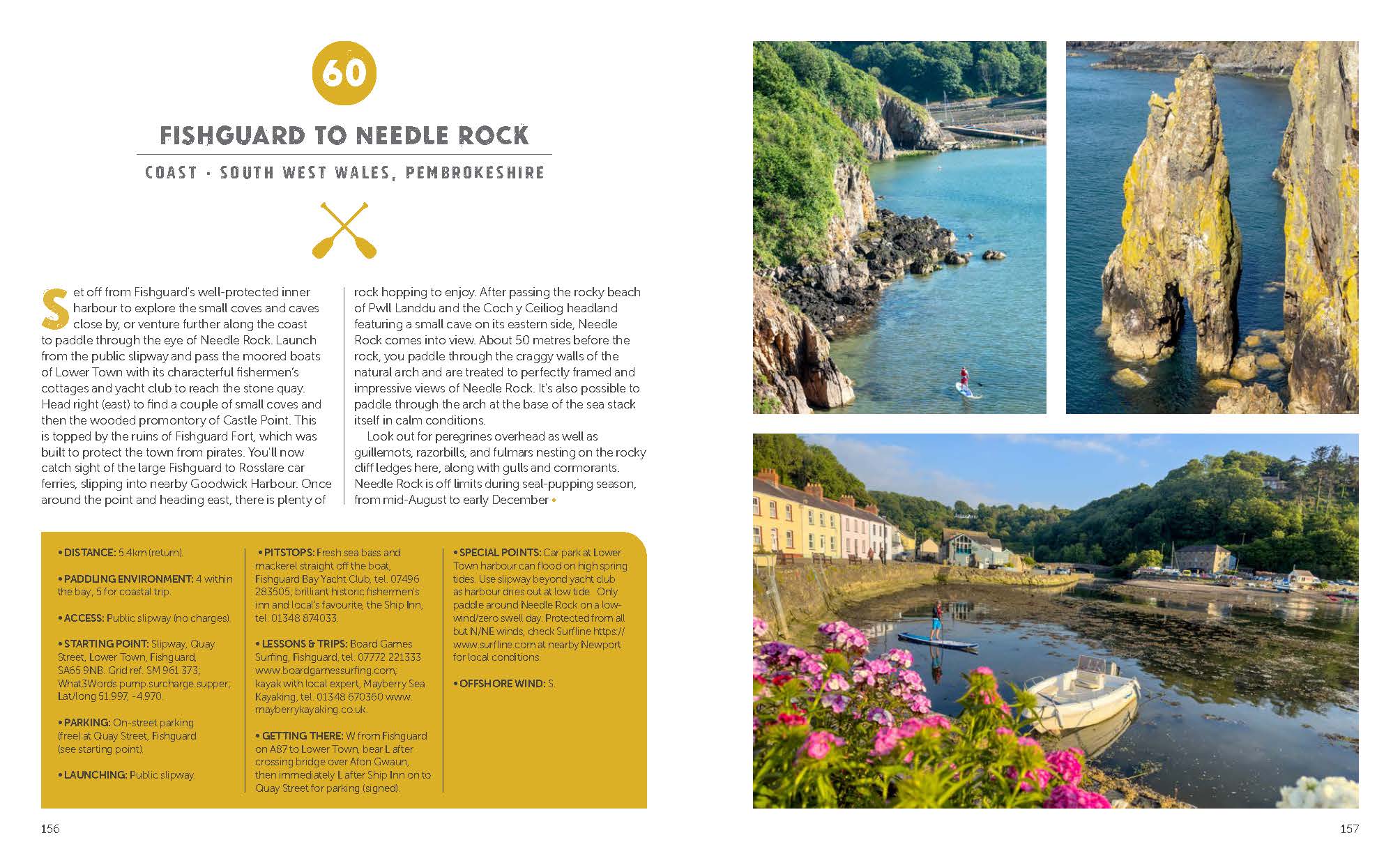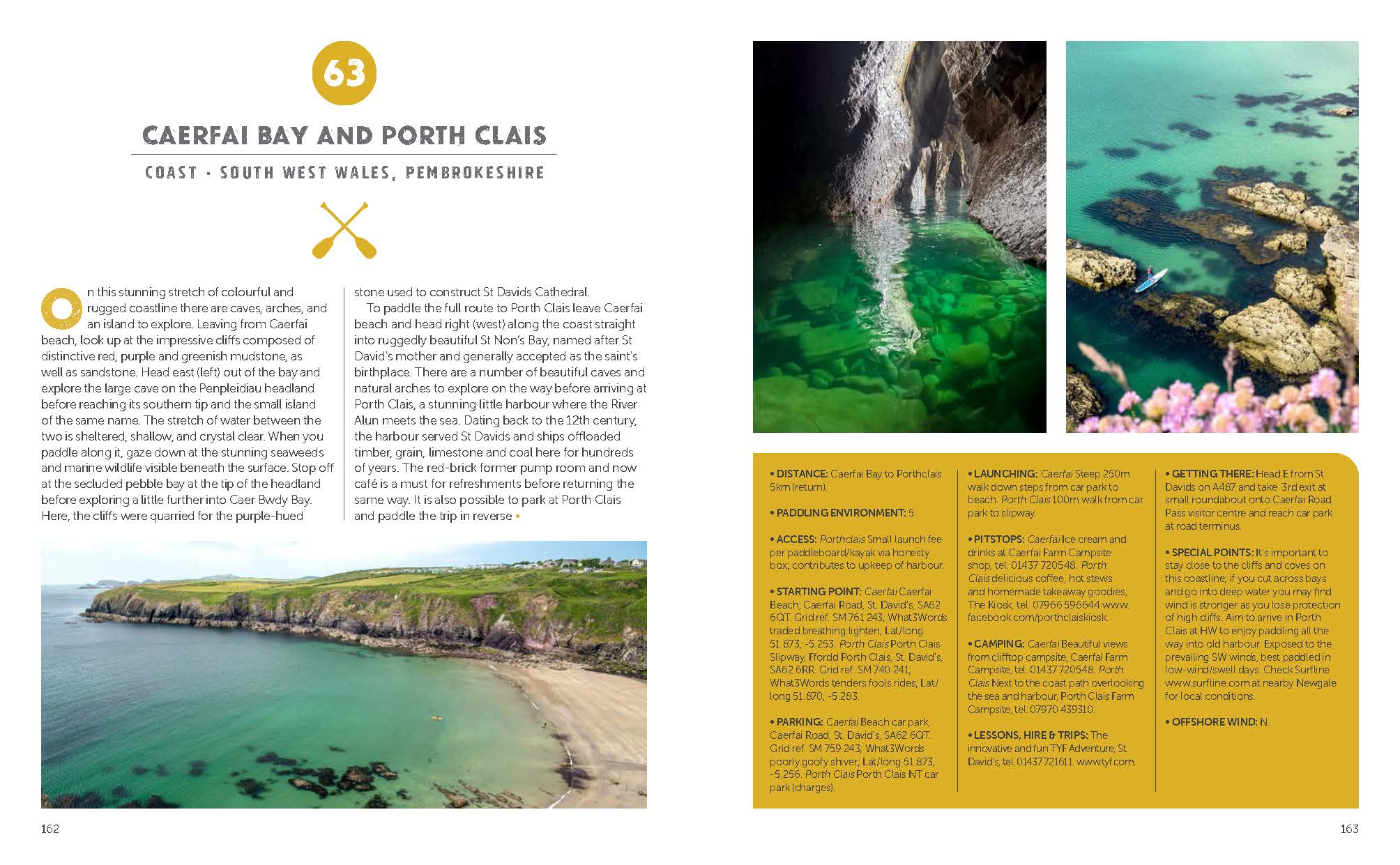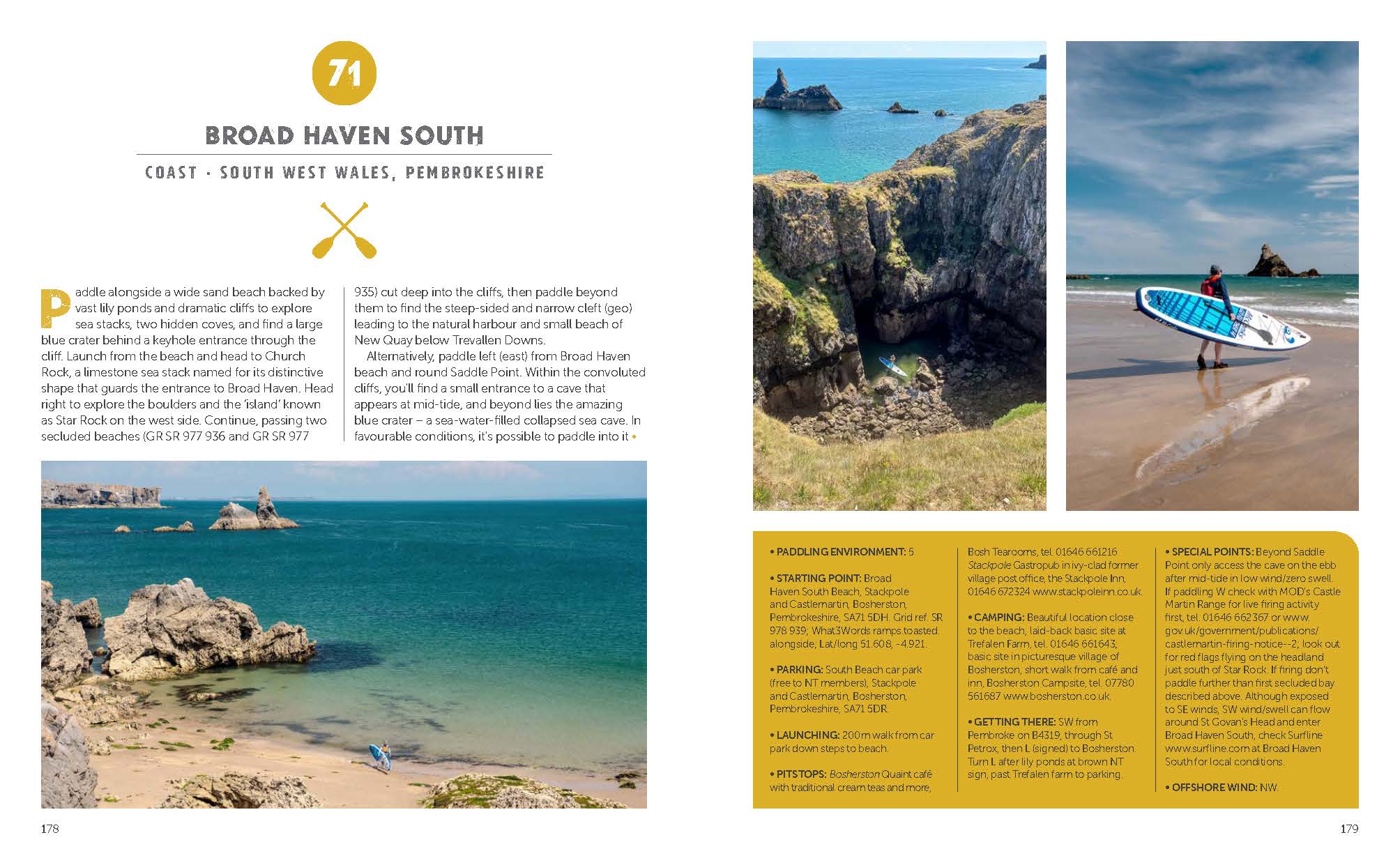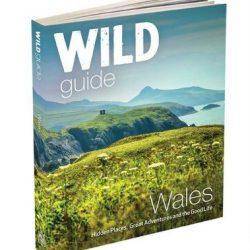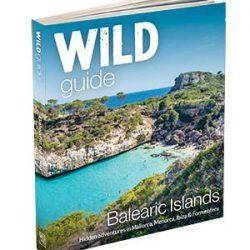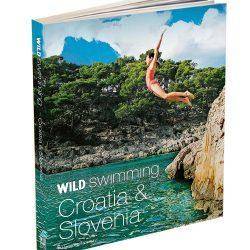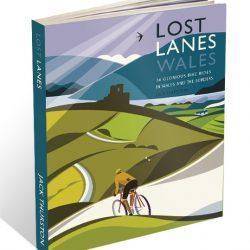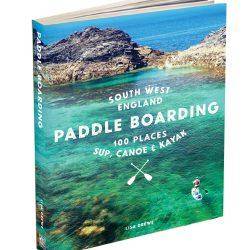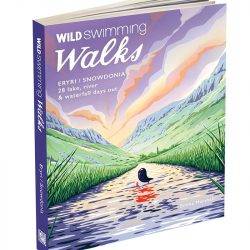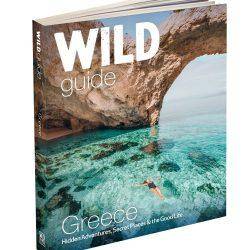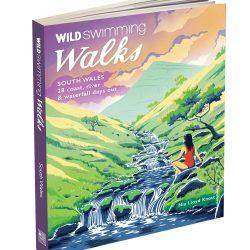From Lisa Drew, author of best-selling Paddle Boarding South West and Islandeering comes….
Explore the best of Wales’ rivers, canals, lakes, estuaries and coast by paddle board SUP, canoe and kayak
Paddle along rivers and meandering estuaries, swim and picnic on wild coves and silver sands. Featuring more than 100 of the best locations across Wales – including Snowdonia, Pembrokeshire, Gower, Wye and the Brecon Beacons – this trusted guide provides all the practical information you’ll need for trips out on the water by paddleboard, canoe or kayak.
Illustrated with sparkling photography and offering a variety of routes, this is a beautiful and inspiring book for water lovers and adventurers afloat, whether you’re a beginner
or a seasoned paddler.
Paddle Boarding Top Picks
Fun for Families
Easy access for all with fun daysout on lakes, rivers and beaches
Adventure & Challenge
Longer estuary and canal routes plus exhilarating coastal stretches
Cliffs, Caves & Arches
Discover weird and wonderful geological coastal features
History & Heritage
See vibrant cities, castles and historic ports from a unique perspective
Island circumnavigations
Journey around a whole coastline in a single trip
Best for Pubs & Inns
Recharge in welcoming and characterful waterside inns
Cafés & restaurants
Taste freshly caught seafood and sample local treats
Wild swimming
Find secluded coves and freshwater pools for the perfect dip mountain lakes
Mountain Lakes
Float beneath the peaks of Wales’ iconic mountains
Camping
Sleep under starry skies in waterside campsites
About the author
Lisa Drewe is the award-winning author of Islandeering and Paddleboarding South West, and founder of www.Islandeering.com. Following a career that included the Foreign Office and National Trust, she is now a full-time writer and photographer. Dividing her time between Wiltshire and the Isle of Skye, Lisa is chair of the charity, Whale and Dolphin Conservation, and an Ordnance Survey Outdoor Champion.
Contents
Paddling routes map 6
Paddling routes information table 8
Introduction 11
Choosing a board, paddle and fins 16
Advice for beginners 17
Planning a trip 18
SUP with your pup 23
What to wear 24
What to pack in your drybag 25
Using this book 26
Best for (routes by theme) 29
PADDLING ROUTES
Anglesey & Llŷn Peninsula 38
North Wales 88
Mid-Wales 138
South West Wales, Pembrokeshire 152
South West Wales, Carmarthenshire 188
South West Wales, Gower 200
South West Wales, Swansea Bay 208
South East Wales 226
Brecon & Wye 244
Keeping safe on the water 250
Paddling responsibly 252
Acknowledgements 256
Introduction to Paddle Boarding in Wales
Every paddleboarder’s bucket list must include Wales whether a beginner, family, adventurer, or pro. It offers a unique blend of national parks, stunning landscapes, rich history, and vibrant culture – all inviting exploration on the water. From gazing at the rugged majesty of Snowdonia’s mountains mirrored in serene lakes to delving into the coastal wonders of Pembrokeshire, Wales promises diverse and beautiful paddleboarding destinations. Rivers take you through rolling hills and valleys, while canals carry you across towering aqueducts and through torchlit tunnels. Explore sandy estuaries that are the haunt of ospreys, or gaze up at the iconic buildings of bustling waterside cityscapes. This country is unique in every way – where else can you paddle up to the ramparts of vast castles in a land that holds more per square mile than anywhere else in Europe?
Paddling and wellbeing
We intuitively know that we feel better in ‘blue spaces’, and the science behind the mental and physical benefits of being close to water is becoming clear. In my last book I used the term, ‘blue health’, coined by Wallace J Nichols, a Californian surfer and marine biologist, who sums it up perfectly when he suggests that being on, under, or beside water results in a “mildly meditative state characterized by calm, peacefulness, unity, and a sense of general happiness and satisfaction with life in the moment”. After another year spent on the water I couldn’t agree more. It’s little wonder, then, that paddleboarding has become so popular and why more of us are discovering this activity every day.
Although every journey can be an adventure, the joy of paddling for many people is simply being on the water and engaging every one of our senses. Watch ring-like patterns form as heavy raindrops hit the water or the light dancing across a river’s surface; breathe in the ozone of the ocean, the sweet smell of river water, and enjoy the fresh taste of spring-fed lakes. The sound of a paddle dipping beneath the water’s surface, the emptying of tidal creeks heralded by the cries of wading birds looking for their next meal, the gentle song of rivers flowing on their eternal journey to the ocean. All these sensory experiences increase our ‘blue health’, and all are beloved by paddlers.
My journey
I have paddled since I was a child, my school Youth Club giving me the opportunity to learn how to kayak. I loved the thrill of shooting the Symond’s Yat rapids and paddling the length of the Thames, bumping down the many weirs and hanging on for dear life in the locks (not a great idea, even though legal then). Later the camaraderie of sea-kayaking trips around the Isles of Scilly, the embarrassing sinus leaks after attempted Eskimo rolls, and the night-time training for the Devizes-Westminster canoe race were certainly character-building for my younger self and a firm foundation for later adventures.
It was on a work trip to California that I first noticed the new sport of paddle-surfing and was amazed that people could not only stand up on long boards in big waves using just a paddle as a rudder, but also move gracefully. Paddleboarding didn’t arrive in Britain until a few years later but when I tried it myself, I was instantly hooked. On recent travel projects, I’ve circumnavigated over 600 islands in the UK, many using kayaks and paddleboards as a means of transport, and this book is a way of sharing some of those journeys along with many more. I started this odyssey in the South West, my home and holiday destination for most of my life, and am continuing it in Wales, the country that first inspired me to spend a lifetime exploring the outdoors.
Connect with nature, heritage, and adventure
This last year spent exploring and logging coastal, lake, canal, and river routes has been pure joy, with trips revealing beautiful landscapes, wild places, and unique cityscapes. There have been close encounters with wildlife and thrilling marine adventures, as well as relaxing stops at charming rural inns and beachside cafés. I’ve also met some wonderful people along the way and learned more about the fascinating history of Wales. The journeys have been amazing, with a diversity that is hard to capture in just a few sentences. Nevertheless, join me on a brief tour around the regions as I highlight some of the places that have contributed to the rich experience of paddling in this remarkable country.
The journey begins in Anglesey where wildlife flourishes and natural wonders range from the Cemlyn Bay tern colonies to 1,800 million-year-old geological formations at Ynys Llanddwyn. Trips include a tour of historic Amlwch’s port and the thrill of navigating the Menai Straits. The rugged coastline of the Llŷn Peninsula has much to offer such as dramatic sea stacks near Trefor, the disembarkation point for Bardsey Island pilgrims at Porth Meudwy, a family haven at Traeth Glan-y-Don in Pwllheli, and one of the very best beachside inns.
In North Wales, the majesty of mountain peaks and forests is reflected in pristine lakes such as Llyn Padarn and Llyn Tegid in Eryri National Park (Snowdonia), and the picturesque Llyn Efyrnwy (Lake Vyrnwy). Coastal adventures include trips around Great Orme (Y-Gogarth) and Little Orme, as well as tide-assisted excursions to explore the extensive sandbars and bird-filled estuaries of the Dwyryd, Conwy, Aber Mawr (Barmouth), and Mawddach. For families, there are calmer waters on a lake with a replica Roman fort, canal trips crossing spectacular aqueducts, and lovely beaches beneath impressive Criccieth Castle and Tremadog Bay.
Journeys through the gentler landscapes of mid-Wales include special places where you can see breeding ospreys in summer, such as Llyn Clywedog, a lake cherished by its sailing community. Coastal wonders unfold in New Quay and Aberporth, both offering stunning routes and the exciting prospect of encountering the largest pod of dolphins in Europe. In colourful Aberystwyth, families will find plenty to do, such as visiting the seadragon on Llandrindod Lake. As for river routes, the Wye journey from Glasbury to the literary haven of Hay finds its equal in the breathtaking run between Cilgerran and the golden shores of Poppit Sands.
The extraordinary coastal highlights of southwest Wales, including Pembrokeshire and Gower, require no grand introduction. Adventurers will enjoy thrilling excursions to the enchanting green-blue waters within the Witches Cauldron, and to Abereiddi’s Blue Lagoon, as well as paddling through the eye of Needle Rock near Fishguard. By contrast, this region also offers superb family-friendly beaches and inland lakes in tranquil settings. Tide-assisted journeys lead to charming destinations like the inn at Cresselly Quay, historic Carew Castle, and even the Monty Python-featured Kidwelly Castle. Glide past the Swansea.com Stadium, and uncover hidden gems on the doorsteps of this great city, Neath, and Port Talbot — including the second largest sand dune in Europe.
Southeast Wales, celebrated for the majestic Bannau Brycheiniog (Brecon Beacons) and featuring the meandering Wye, was the final destination for my paddleboarding odyssey. From the three bays of Barry Island to the urban vibrancy of Cardiff Bay, highlights include paddling beneath the arches of the iconic Principality Stadium and venturing upriver to fairytale Castell Coch. Inland reservoirs and lakes, once vital water sources for a growing population and industry, have been transformed into nature-rich oases. In Bannau Brycheiniog, my passion for outdoor adventure was ignited at Plas Pencelli, which offers a delightful paddleboard route along the scenic Monmouthshire and Brecon Canal. Nearby, the mountain reservoir at Pontsticill, nestled beneath Pen y Fan, and Keeper’s Pond at Blaenavon, are unique, wild destinations. The journey from Monmouth on the Wye, a timeless river that has introduced generations of paddlers to the water, concludes at one of my favourite inns – a fitting end to my Wales paddleboarding journey.
Respecting our environment
Whatever our reason for paddling, few places in the world offer more than Wales, a view endorsed by the thousands of paddlers I met along the country’s coast, lakes, canals, and rivers this year. Yet this also made me consider the impact of paddling on the natural world and our collective responsibility to minimise it. During the Covid-19 pandemic, many of us flocked to the water to seek its restorative powers and fulfil our need to connect more deeply with nature. We wanted to explore more of our local environment and paddling allowed us to see things from a different perspective – the water. Having picnics on riverbanks, watching wildlife, enjoying a different form of physical activity whilst improving our blue health was the balm we all so desperately needed.
While good for our mental and physical health, this exodus into the natural world was not without its negatives. I won’t dwell on these except to say that since that time access to a number of paddling sites has been reviewed and goodwill withdrawn by some landowners. Others who were already aggressively interpreting laws on access to rivers in particular, have taken further steps to make access more challenging. I find it hard to swallow that of the 42,700 miles of river in the UK only 1,400 have a clear and undisputed right of public access – that’s only 3% of our rivers. Based on a wealth of historical evidence, British Canoeing and Canoe Wales assert that under common law there exists a public right of navigation on all rivers physically capable of being navigated. Opponents firmly reject this position, which is why it’s so important to join them: these organisations are campaigning for your rights of access.
We also seem to be at a tipping point in terms of the health of our blue spaces. Inland water quality is deteriorating rapidly under the onslaught of sewage, agricultural run-off, and plastic – so much so that only 16% in England and 44% in Wales have achieved good ecological status. Oceans are suffering the same fate but at least are firmly in the sights of many groups campaigning for clean seas. We now know just how many polluting incidents have occurred in British waters and, frankly, these should be unlawful. Access to high-quality blue spaces for the many, not just the few, is important and there is hope. The ever-growing community of paddlers, swimmers, and water lovers are also joining the call to action
for better protection of our waterways and ensuring access for all. In the beautiful words of Wallace J Nichols:
“Preserving, protecting, and restoring our waters are tasks for many lifetimes, and sometimes the effort can seem overwhelming. But as long as we stay connected with all of the many, many blessings that water provides, and continue to keep that love in the forefront of our minds and hearts, as long as we remind ourselves to hope, then our stories will
help connect others to water and encourage them to do what they can to help care for this beautiful Blue Marble world.”
I certainly aim to do that and invite you to do the same by enjoying and respecting the routes in this book. They were chosen carefully and don’t include trips to particularly sensitive and fragile environments. I’ve also left plenty of blue spaces in Wales for the curious to discover for themselves, while also respecting the hidden places known only to local groups. You can always ask them: I’m sure they’ll share. Also excluded are places where Wildlife Trusts and other conservation organisations feel paddling will be detrimental to wildlife. Some of the paddles can be accessed by public transport, especially if you have an iSUP, but many are by car owing to the transport of kit. Only official parking spots with recognised access to the water are included and lift shares are encouraged, where possible, to ease pollution and congestion.
In short, I wish you endless days of happy paddling and ask you to help look after our wonderful blue spaces. Use this book for inspiration but don’t forget to grab a map and explore them for yourself. None of us in the UK lives far at all from water, and in that respect we are uniquely blessed •
